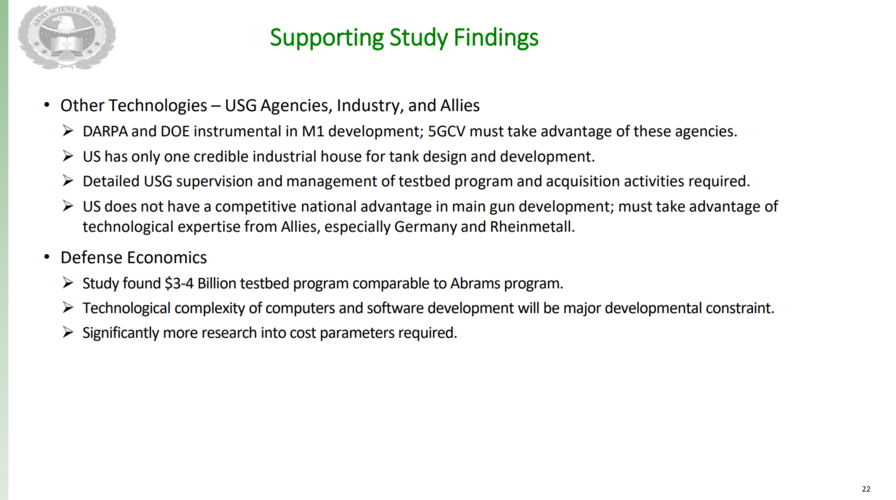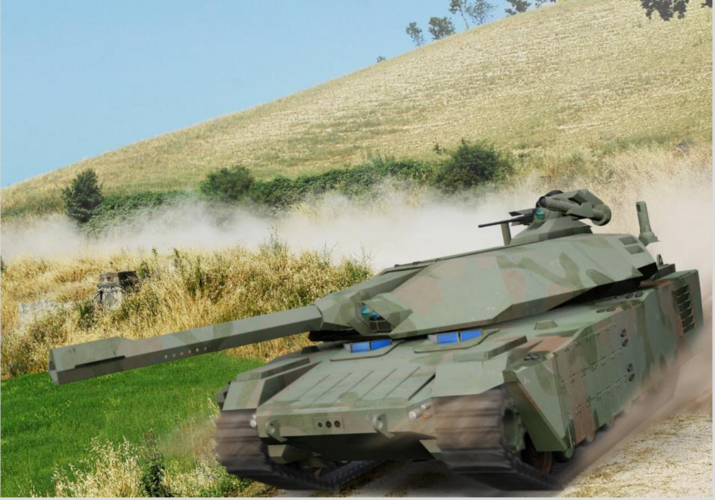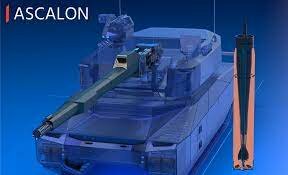A Tentative Fleet Plan
I really should change my personal text
- Joined
- 9 April 2018
- Messages
- 1,208
- Reaction score
- 2,811
Not sure 5' 5" people are intellectually challenged, the correlation between height and intelligence is minor.
Not sure 5' 5" people are intellectually challenged, the correlation between height and intelligence is minor.
Like comparing shell size to hand sizeWhile all this is fascinating it seems very tangential to the topic of Abrams replacement


The US literally hasn't designed their own new tank gun since the 1960s and the (failed) 152mm used on M551, M60A2, and MBT70. Other guns? M26/46/47/early 48s, 90mm dating to 1940s. M48A3(?) and later? British L7 105mm. M60? Same L7 105mm. Abrams? Rhinemetall 120mm.'does not have competitive national advantage in main gun development....' when you have Rarefaction wAVE guN (RAVEN) research and
cost cant be everything anymore.
Plus needing an autoloader, the 130mm shells are twice the length and weight of the 120mm.Hmm... Rh-130 off-the-shelve for M1E3? It's supposed to be a drop-in upgrade over legacy 120mm guns, so maybe just rework some of the hydraulic drives and digital control. Better yet modernize it into a full-electric system as many users on here have craved for so loong~
27 ton unmanned tank? Might as well give it enough armor or ammunition for ~35-40 tons, since 27tons is well over C-130 transport weights and I bet you can't stuff any more unmanned tanks inside a C-5/C-17 than you can ~35-40ton vehicles.
So that's a 105-155mm gun. Indirect fire suggests that you need at least 6 rounds in the autoloader ready rack. I don't see how you can stuff that many rounds inside an elevating turret.View attachment 708961
NGCCVS class II Large Calibre Indirect fire Direct Fire 15-25 ton radio controlled radio flyer is another conceived RAVEN install
Speaking of other things, IMHO there is no hurry, so why not make incremental fleet upgrades while pursuing limited contractor developed and managed new vehicle capabilities until one or more pans out for some kind of new competition. Build and start testing something/numerous things for heaven sake. expand. Dependence on a foreign gun in todays shifty world seems ill advised, unless RM starts making guns in Detroit :}Remember that when they talk about comparative advantage, they're talking about how much it costs (in money and other resources) for us to do the development work versus letting someone else do it. The US obviously has some ability to design tank guns, but a lot of that capacity is already tied up working on things like ERCA. So the judgement is that we can let Germany or whoever design tank guns (or at least tank gun cartridges) and the results will be good enough for us without eating up resources in the US that are better used working on other things
Pretty sure the M256 120mm is made here in the US, it was just designed in Germany.Speaking of other things, IMHO there is no hurry, so why not make incremental fleet upgrades while pursuing limited contractor developed and managed new vehicle capabilities until one or more pans out for some kind of new competition. Build and start testing something/numerous things for heaven sake. expand. Dependence on a foreign gun in todays shifty world seems ill advised, unless RM starts making guns in Detroit :}
given the current context, indirect fire would appear to be a priority. Any gun under 140mm( more like 152/5mm) able accomplish limited counter battery but more importantly counter-UAS launch sites . Synoptic surveillance will get launcher targets but they must be engaged before they swarm ya.View attachment 708963NGCCVS class II Large Calibre Indirect fire Direct Fire 15-25 ton View attachment 708961radio controlled radio flyer is another conceived RAVEN install
Remember that when they talk about comparative advantage, they're talking about how much it costs (in money and other resources) for us to do the development work versus letting someone else do it. The US obviously has some ability to design tank guns, but a lot of that capacity is already tied up working on things like ERCA. So the judgement is that we can let Germany or whoever design tank guns (or at least tank gun cartridges) and the results will be good enough for us without eating up resources in the US that are better used working on other things
Still needs a way to get rounds from the stowage in the hull up to the breech, and ideally ~6 rounds ready to go in the autoloader up in the turret.given the current context, indirect fire would appear to be a priority. Any gun under 140mm( more like 152/5mm) able accomplish limited counter battery but more importantly counter-UAS launch sites . Synoptic surveillance will get launcher targets but they must be engaged before they swarm ya.
someone we know at Pic would beg to differ.RAVEN has been dead for literal decades at this point. It was never developed because the M68 was bullied into working on the MGS.
someone we know at Pic would beg to differ.
It will most likely be an XM360, with the Rh-130 being a distant second, unless Rheinmetall suddenly is able to produce a vehicle people are interested in
I'm expecting the long 120mm.With the reports that Hungary is funding KF51 Panther development, I'm very curious whether it will have the new 130mm gun as shown in the mockups or if they will fall back to a long-barrel 120mm.
Thread 'USA Inability or Unwillingness to Produce a Main Tank Gun'The US literally hasn't designed their own new tank gun since the 1960s and the (failed) 152mm used on M551, M60A2, and MBT70. Other guns? M26/46/47/early 48s, 90mm dating to 1940s. M48A3(?) and later? British L7 105mm. M60? Same L7 105mm. Abrams? Rhinemetall 120mm.
RAVEN seems to be optimized around a relatively light cannon size, though it can probably scale to 120mm. I'd say that RAVEN would be the way to mount that new 50mm Bushmaster 3 in a helicopter.
How about swappable barrels?Going to 130mm means a lot of new ammunition has to be procured and a lot of old 120mm ammunition risks going to waste.
That too, but the US/NATO has done that before with the 105 to 120mm change.Going to 130mm means a lot of new ammunition has to be procured and a lot of old 120mm ammunition risks going to waste.
That also involves a big difference between ammo stowage arrangements.How about swappable barrels?
IIRC XM291 was intended to be interchangable between the 120mm and 140mm tube so that they could use legacy 120mm ammo for both training and low-intensity combat that doesn't need a super-sabot.
With the reports that Hungary is funding KF51 Panther development, I'm very curious whether it will have the new 130mm gun as shown in the mockups or if they will fall back to a long-barrel 120mm.
Would definitely require redesigning all the ammo stowage.Given the tank has only ever been shown with 130mm, I'm not sure it can even be fitted with the 120mm tbh. It would probably require redesigning the turret, given the Rh-130 is literally a scaled up and embiggened 120mm.
Rheinmetall 130mm rounds are just necked up 120mm case with a 130mm sabot so I dont see any massive changes tbh. Length would be a restriction, so you would be losing lots of horizontal space here, but otherwise fine imo.That also involves a big difference between ammo stowage arrangements.
Would definitely require redesigning all the ammo stowage.

I'm expecting the long 120mm.
130mm with two piece ammo doesn't gain a whole lot in terms of penetrator size.
Going to 130mm means a lot of new ammunition has to be procured and a lot of old 120mm ammunition risks going to waste.
Given the tank has only ever been shown with 130mm, I'm not sure it can even be fitted with the 120mm tbh. It would probably require redesigning the turret mounts, given the Rh-130 is literally a scaled up and embiggened 120mm gun.
Hungary will probably just operate a mixture of tank rounds and MBTs, like most places in Eastern Europe. Poland will still have the more complex supply situation in 2025, given it will be operating a mixture of Abrams, Leopard 2, PT-91, and K2. This is no more complex in practice than any of NATO's Cold War militaries, which often had three or four main battle tank types in service at any one time.
Yet the longest thus-far-tested/shown penetrators are only ~850mm +-, which is the same length as the top line 120mm penetrators.The Rh130 is a single-piece cartridge much longer than the 120mm. Which means the penetrator can be very long (higher Lbeing the secret to better penetration). Especially now that they seem to have solved the challenge of embedding the projectile tail in the propellant charge.
I'm not expecting Hungary, a NATO member, to buy a new main gun round that isn't currently in NATO use.Given that the KF51 is just barely past being a paper design (and will need a whole new chassis, apparently), I suspect they could go back and rework the turret for 120mm if the customer wanted.
But 130mm seems like a sensible forward lean, if the Hungarians have confidence that anyone else will follow along (like Germany). My guess is that Germany will fail out of MGCS and buy KF51 as well, leveraging Hungary's investment.
Like the US just added a new 105mm assault gun in the M10 Booker.Or for that matter, the various armies that have 105mm tank destroyers or assault guns and 120mm MBTs.
